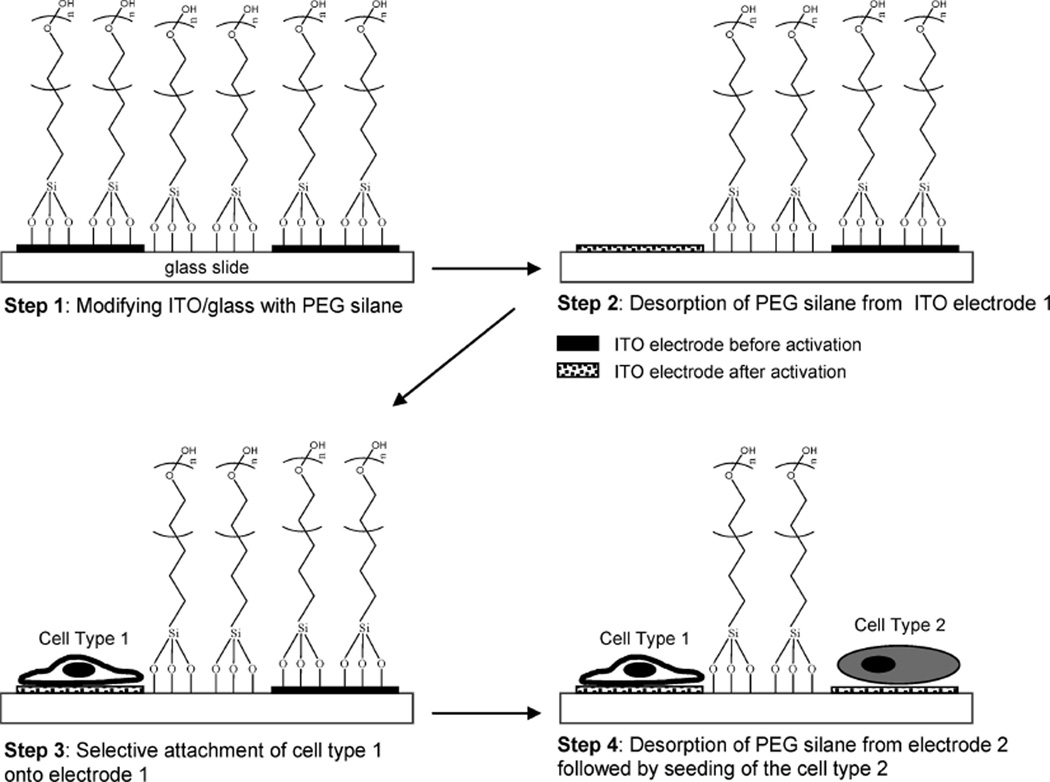Figure 1.
“Switching” fouling properties of ITO electrodes in order to exercise spatial and temporal control of cell attachment. Step 1: Glass substrates with microfabricated ITO electrodes are modified with PEG-terminated tricholorosilane which renders ITO and glass regions of the substrate nonfouling. Step 2: Applying reductive potential (−1.4 V vs Ag/AgCl reference for 60 s) to the desired electrode leads to desorption of the PEG silane layer while unactivated ITO regions and glass domains retain PEG molecules. Step 3: Upon exposure to the substrate, cells attach selectively to an activated electrode 1 and are not able to adhere to glass regions or unactivated ITO electrode 2. Step 4: Upon assembly of a cell type 1 onto an electrode 1, electrode 2 is activated by applying negative potential, and cells of type 2 may be seeded onto the same surface.

